Related Research Articles
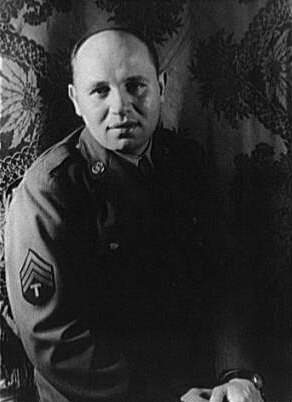
Romare Bearden was an American artist, author, and songwriter. He worked with many types of media including cartoons, oils, and collages. Born in Charlotte, North Carolina, Bearden grew up in New York City and Pittsburgh, Pennsylvania, and graduated from New York University in 1935.

Milton Ernest "Robert" Rauschenberg was an American painter and graphic artist whose early works anticipated the Pop art movement. Rauschenberg is well known for his Combines (1954–1964), a group of artworks which incorporated everyday objects as art materials and which blurred the distinctions between painting and sculpture. Rauschenberg was primarily a painter and a sculptor, but he also worked with photography, printmaking, papermaking and performance.

Mark Bradford is an American visual artist. Bradford was born, lives, and works in Los Angeles and studied at the California Institute of the Arts. Recognized for his collaged painting works, which have been shown internationally, his practice also encompasses video, print, and installation. Bradford was the U.S. representative for the 2017 Venice Biennale. He was included in Time Magazine’s list of the 100 Most Influential People in 2021.

Eldzier Cortor was an African-American artist and printmaker. His work typically features elongated nude figures in intimate settings, influenced by both traditional African art and European surrealism. Cortor is known for his style of realism that makes accurate depictions of poor, Black living conditions look fantastic as he distorts perspective.
Kerry James Marshall is an American artist and professor, known for his paintings of Black figures. He previously taught painting at the School of Art and Design at the University of Illinois at Chicago. In 2017, Marshall was included on the annual Time 100 list of the most influential people in the world. He was born and raised in Birmingham, Alabama, and moved in childhood to South Central Los Angeles. He has spent much of his career in Chicago, Illinois.

Barkley L. Hendricks was a contemporary American painter who made pioneering contributions to Black portraiture and conceptualism. While he worked in a variety of media and genres throughout his career, Hendricks' best known work took the form of life-sized painted oil portraits of Black Americans.
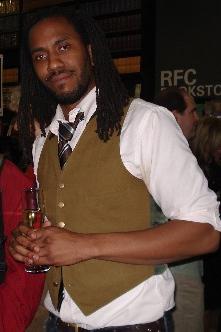
Rashid Johnson is an American artist who produces conceptual post-black art. Johnson first received critical attention in 2001 at the age of 24, when his work was included in Freestyle (2001) curated by Thelma Golden at the Studio Museum in Harlem. He studied at Columbia College Chicago and the School of the Art Institute of Chicago and his work has been exhibited around the world.
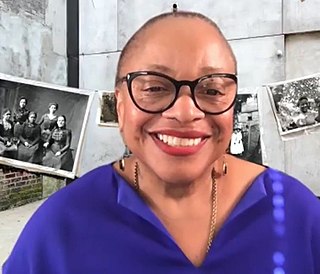
Deborah Willis is a contemporary African-American artist, photographer, curator of photography, photographic historian, author, and educator. Among her awards and honors, she is a 2000 MacArthur Fellow. She is currently Professor and Chair of the Department of Photography and Imaging at Tisch School of the Arts of New York University.
Godfried Donkor is a Ghanaian artist, living and working in London, who has exhibited in Cuba, Mexico, the US, Europe and Africa. He is known primarily for his work in collage, and has been described as similar to Keith Piper and Isaac Julien in his output. Some of his pieces depict boxers, such as Jack Johnson and Mohammad Ali. Donkor has been the subject of numerous solo exhibitions, both in the United States and in Europe, and was Ghana's representative to the 2001 Venice Biennale. His work is in the collection of the National Museum of African Art at the Smithsonian Institution.

William (Kross) Greiner in New Orleans, Louisiana, is an American photographer and multi-media artist living in Santa Fe, NM.
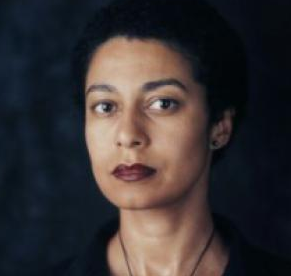
Maud Sulter was a Scottish contemporary fine artist, photographer, writer, educator, feminist, cultural historian, and curator of Ghanaian heritage. She began her career as a writer and poet, becoming a visual artist not long afterwards. By the end of 1985 she had shown her artwork in three exhibitions and her first collection of poetry had been published. Sulter was known for her collaborations with other Black feminist scholars and activists, capturing the lives of Black people in Europe. She was a champion of the African-American sculptor Edmonia Lewis, and was fascinated by the Haitian-born French performer Jeanne Duval.

James Barnor Hon. FRPS, OV is a Ghanaian photographer who has been based in London since the 1990s. His career spans six decades, and although for much of that period his work was not widely known, it has latterly been discovered by new audiences. In his street and studio photography, Barnor represents societies in transition in the 1950s and 1960s: Ghana moving toward independence, and London becoming a multicultural metropolis. He has said: "I was lucky to be alive when things were happening...when Ghana was going to be independent and Ghana became independent, and when I came to England the Beatles were around. Things were happening in the 60s, so I call myself Lucky Jim." He was Ghana's first full-time newspaper photographer in the 1950s, and he is credited with introducing colour processing to Ghana in the 1970s. It has been said: "James Barnor is to Ghana and photojournalism what Ousmane Sembène was to Senegal and African cinema."

The Quin is a luxury hotel in New York City. It is located on 57th Street and Sixth Avenue in Midtown Manhattan, two blocks south of Central Park.
Awol Erizku is an Ethiopian-born American contemporary artist. His primary media are painting, photography, sculpture and film. Erizku works with a wide variety of found materials. Erizku was dubbed "the art world's new 'it' boy" by Vulture Magazine in 2016. He lives in New York City and Los Angeles.

Michael Paul Britto is a New York contemporary artist who explores the consequences of racial inequality through photography, video, collage, sculpture and performance. Britto shines a light on important racial issues using contemporary art. His work has been exhibited predominantly in New York, but also internationally, with exhibitions in Spain, Poland, and England. In 2004, he won the Individual Artist grant from New York State Council of The Arts, and in 2005, he was awarded the Media Arts Fellowship Grant from the Rockefeller Foundation.
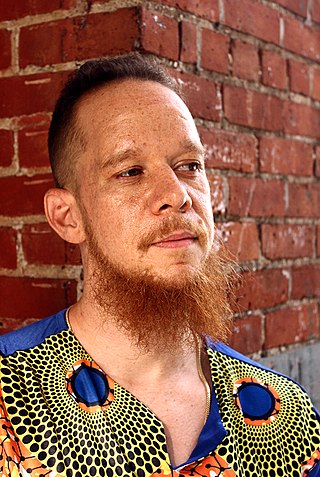
Yashua Klos is an American visual artist best known for his innovative large-scale collage works which address issues of identity, race, memory and community.
Omar Victor Diop is a Senegalese photographer whose conceptually-rich work is exhibited around the world. He lives and works in Dakar and Paris, France.

Cheryl R. Riley is an American artist and furniture designer. Her official website is cherylrriley.com/
Rico Gatson is a multidisciplinary artist working in Brooklyn, New York, whose work draws from his African-American background. Through his art, he provides social commentary on significant moments in African-American history. His work combines abstract patterns with vibrant colors, which creates confrontational work that references African American culture and history.
Black Male: Representations of Masculinity in Contemporary Art was a landmark exhibition held at New York's Whitney Museum of American Art from November 10, 1994 until March 5, 1995. Organized by curator Thelma Golden, Black Male was a survey of the changing representations of black masculinity in contemporary art from the 1970s to the 1990s. The show included almost seventy works by twenty-nine artists of varying race, gender, and ethnicity. It also featured an extensive film and video program that explored representations of blackness in Hollywood, the independent cinema, video, and television. Black Male was widely labelled controversial and heavily criticized for its political subject matter.
References
- 1 2 Smalls, James (June 2008). "African-American Self Portraiture". Third Text. vo. 15, no. 54: 47–62 – via JSTOR.
- 1 2 Riley, Cheryl R. (July 2007). "Lyle Ashton Harris: a look through his camera's lens". Ebony . Vol. 62, no. 9. pp. 196–199. Retrieved 8 July 2015.
- 1 2 3 Bright, Deborah (1998). Passionate Camera. USA and Canada: Routledge. pp. 250. ISBN 0-415-14581-3.
- 1 2 3 4 5 6 Durón, Maximilíano (2019-04-02). "Out Side In: In His Arresting Work, Lyle Ashton Harris Looks to the Recent Past for New Ways Forward". ARTnews. Retrieved 2019-10-15.
- 1 2 "Oral History Interview with Lyle Ashton Harris, 2017 March 27-29". si.edu. March 27–29, 2017.
- 1 2 3 Perchuk, Posner, Andrew, Helaine (1995). The Masculine Masquerade. Massachusetts Institute of Technology: The MIT Press. pp. 127. ISBN 0-262-16154-0.
{{cite book}}: CS1 maint: multiple names: authors list (link) - 1 2 3 4 5 6 7 8 Coblentz, Cassandra, author. Appiah, Anthony, contributor. Okudzeto, Senam, 1972- interviewer. Harris, Lyle Ashton, 1965- artist. Harris, Lyle Ashton, 1965- interviewee. (2008). Lyle Ashton Harris : blow up. ISBN 9780974364896. OCLC 181910166.
{{cite book}}:|last=has generic name (help)CS1 maint: multiple names: authors list (link) CS1 maint: numeric names: authors list (link) - ↑ "Black Male". The Day . December 1, 1994. Retrieved July 13, 2015.
- ↑ Golden, Thelma (1994). Black Male: Representations of Masculinity in Contemporary American Art. New York, NY: Whitney Museum of American Art. ISBN 0-8109-6816-9.
- ↑ Katz, Jonathan D. (2010). Hide/Seek: Difference and Desire in American Portraiture . Washington, D.C.: Smithsonian Institution. ISBN 978-1-58834-299-7.
- ↑ Blessing, Jennifer (1997). Rrose is a Rrose is a Rrose: Gender Performance in Photography. New York: Guggenheim Museum Publications. pp. 110. ISBN 0-8109-6901-7.
- 1 2 Coblentz, Cassandra (2008). Lyle Ashton Harris: Blow Up. New York, NY: Gregory R. Miller & Co. ISBN 978-0-9743648-9-6.
- ↑ Musser, Amber Jamilla (2018-01-02). "Surface-becoming: Lyle Ashton Harris and brown jouissance". Women & Performance: A Journal of Feminist Theory. 28 (1): 34–45. doi:10.1080/0740770x.2018.1427333. ISSN 0740-770X. S2CID 158869258.
- ↑ Cotter, Holland (2003-09-12). "PHOTOGRAPHY REVIEW; When the I Is the Subject, And It's Always Changing". The New York Times. ISSN 0362-4331 . Retrieved 2019-11-22.
- ↑ Enwezor, Okwui (2010). Lyle Ashton Harris: Excessive Exposure. New York, NY: Gregory R. Miller & Co. ISBN 978-0-9743648-7-2.
- ↑ "Excessive Exposure: Lyle Ashton Harris' 'Chocolate Portraits'". MetroFocus. 2011-07-14. Archived from the original on 2021-01-23. Retrieved 2021-01-23.
- ↑ "Lyle Ashton Harris". The Studio Museum in Harlem. 2020-10-14. Archived from the original on 2021-01-23. Retrieved 2021-01-23.
- ↑ "Lyle Ashton Harris: Accra My Love". arts.kennesaw.edu. Archived from the original on 2021-01-23. Retrieved 2021-01-23.
- ↑ "What's On Monday". nytimes.com. February 16, 2015. Retrieved July 13, 2015.
- ↑ "Artist Spotlight: Lyle Ashton Harris". theadvocate.com. February 10, 2015. Retrieved July 13, 2015.
- ↑ "Culture Type: The Year in Black Art 2014". culturetype.com. December 27, 2014. Retrieved July 13, 2015.
- ↑ "1:54 Contemporary African Art Fair Comes to New York This Weekend". broadwayworld.com. May 15, 2015. Retrieved July 13, 2015.
- ↑ "Lyle Ashton Harris speaks about his current exhibition in Miami". www.artforum.com. Archived from the original on 2021-01-23. Retrieved 2021-01-23.
- ↑ "Nero su Bianco | On the Afro-Italian Identity at the American Academy in Rome". GRIOT. June 9, 2015. Archived from the original on 2021-01-23. Retrieved 2021-01-23.
- ↑ "He Is Some Body: Lyle Ashton Harris's Enigmatic Self-Portraits". washingtonpost.com. February 1, 2008. Retrieved July 13, 2015.
- ↑ "Bruce High Quality Foundation Launches FUG Art Space". artnet.com. April 9, 2015. Retrieved July 13, 2015.
- ↑ "New season dawns for the Cornell". orlandosentinel.com. January 19, 2007. Retrieved July 13, 2015.
- ↑ "Documenting life on Ghana shore". bostonglobe.com. December 10, 2008. Archived from the original on September 24, 2015. Retrieved July 13, 2015.
- ↑ "Ucsb Art, Design and Architecture Museum Exhibitions Examine Art and Politics". States News Service. October 17, 2013. Archived from the original on September 24, 2015. Retrieved July 13, 2015.
- ↑ "Today". The News. November 1, 1996. Retrieved July 13, 2015.
- ↑ "Lyle Ashton Harris: Blow Up at the UB Art Gallery". artvoice.com. October 1, 2008. Retrieved July 13, 2015.
- ↑ "Artists tackle sports images at Andy Warhol Museum". triblive.com. July 3, 2011. Retrieved July 13, 2015.
- ↑ "HOWARD UNIVERSITY PRESENTS 21ST ANNUAL JAMES A. PORTER COLLOQUIUM ON AFRICAN AMERICAN ART". States News Service. March 23, 2010. Archived from the original on September 24, 2015. Retrieved July 13, 2015.
- ↑ "Mickalene Thomas's Adventures in Italy". nytimes.com. June 17, 2015. Retrieved July 13, 2015.
- ↑ Greenberger, Alex (2017-11-14). "Salon 94 Now Represents Lyle Ashton Harris". ARTnews.com. Archived from the original on 2021-01-23. Retrieved 2021-01-23.
- ↑ "Lyle Ashton Harris". artforum.com. May 22, 2015. Retrieved July 13, 2015.
- ↑ "Q&A: Lyle Ashton Harris on his Kennesaw State University show and his love affair with Ghana". ARTS ATL. 2013-03-22. Archived from the original on 2021-01-23. Retrieved 2021-01-23.
- ↑ Avgikos, Jan (January 2019). "Lyle Ashton Harris: Flash of the Spirit". The Brooklyn Rail.
- ↑ Elstone, Jeff (November 2019). "Lyle Ashton Harris on Basquiat, Black Panther, and Afrofuturism's Queer Roots". Vulture.